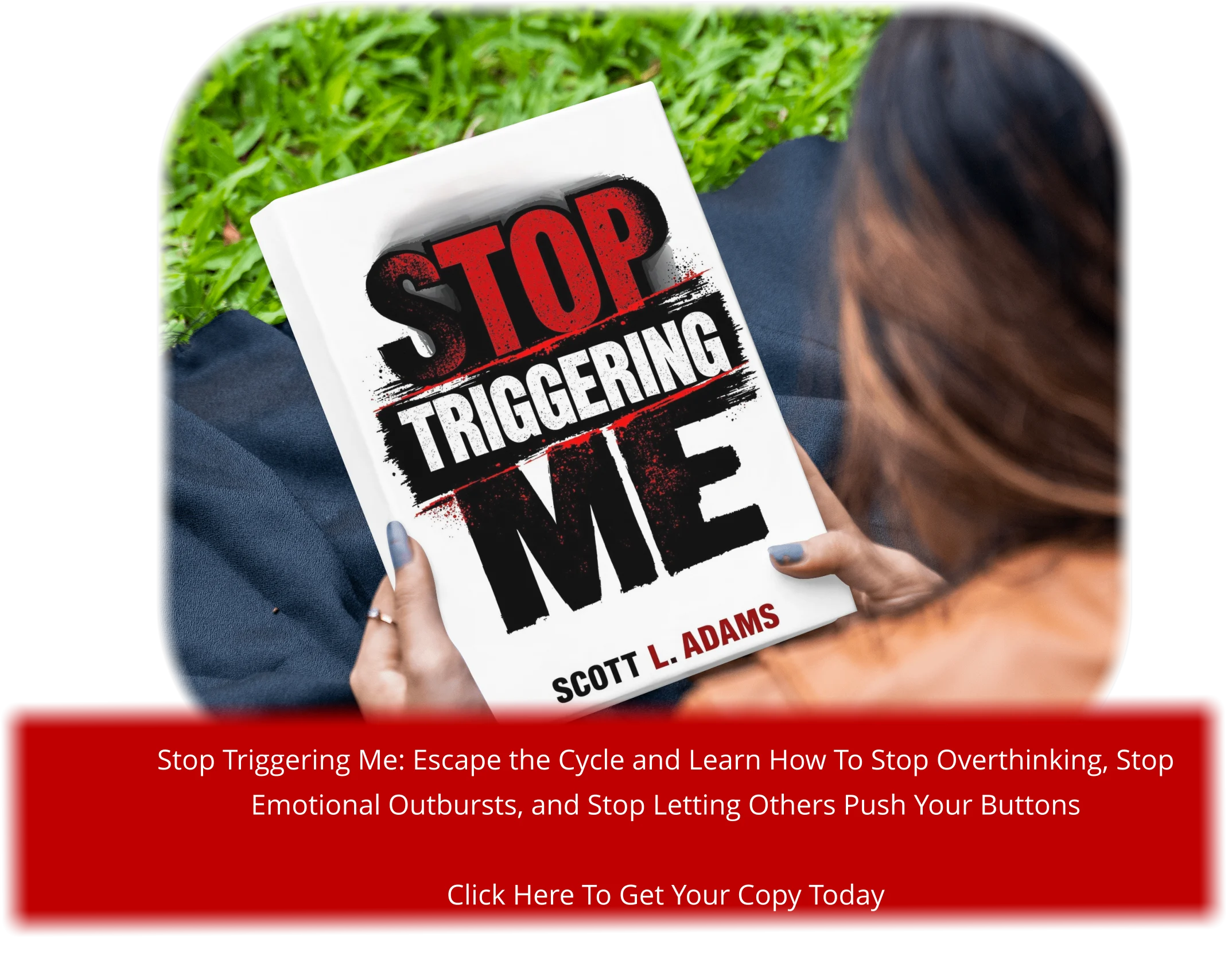Obsessive-Compulsive Disorder (OCD) affects millions of people worldwide, with a significant number being men. I’ve seen firsthand how intrusive thoughts and compulsive behaviors can create a cycle of anxiety that impacts daily life.
Men with OCD often face unique challenges in recognizing symptoms and seeking help due to societal expectations around masculinity and emotional expression. This comprehensive guide will explore the specific ways OCD manifests, from common obsessions and compulsions to effective treatment approaches.
Key Takeaways
- OCD can significantly impact daily functioning in men, creating a cycle of anxiety and compulsive behaviors.
- Men with OCD face unique challenges in recognizing symptoms and seeking help.
- Understanding the nature of OCD is the first step toward managing symptoms.
- Effective treatment approaches can help men reclaim control over their thoughts and behaviors.
- A comprehensive guide can provide insights and practical advice for managing OCD.
What is Obsessive-Compulsive Disorder?
Understanding OCD is the first step towards managing its impact on daily life, and it begins with recognizing its symptoms. As someone who has navigated the challenges of OCD, I can attest to the importance of grasping what OCD entails.
Definition and Prevalence
Obsessive-Compulsive Disorder (OCD) is a mental health disorder characterized by unwanted, intrusive thoughts, known as obsessions, and repetitive behaviors, known as compulsions. According to the International OCD Foundation, OCD affects about 1 in 40 adults and 1 in 100 children in the United States. “It’s a condition that can significantly impact daily functioning and quality of life,” as noted by mental health professionals.
The Cycle of Obsessions and Compulsions
The OCD cycle begins with obsessions—unwanted, intrusive thoughts, images, or urges that cause significant distress and anxiety. Compulsions develop as attempts to neutralize the anxiety caused by these obsessions. For instance, someone with an obsession about contamination might compulsively wash their hands. As one expert puts it,
“The compulsive behavior temporarily relieves the anxiety, but the obsession and anxiety soon return, causing the cycle to begin again.”
Most people with OCD experience both obsessive thoughts and compulsions, though one may be less obvious than the other.
To illustrate, consider the following points that outline the OCD cycle:
- Intrusive thoughts or images trigger anxiety.
- Compulsive behaviors are performed to alleviate this anxiety.
- Temporary relief is followed by the return of intrusive thoughts, restarting the cycle.
Understanding this cycle is crucial for breaking it and managing OCD effectively.
OCD in Men: Gender-Specific Considerations
Men with OCD often encounter specific barriers to seeking help, which can be attributed to a combination of societal expectations and traditional masculine norms. As someone who has navigated these challenges, I can attest to the importance of understanding these gender-specific considerations.
How OCD Manifests Differently in Men
OCD can manifest differently in men compared to women, often with distinct obsessions and compulsions. For instance, men are more likely to experience aggressive or violent obsessions, which can be particularly distressing. This difference in manifestation can sometimes lead to delayed diagnosis, as the symptoms may not fit the typical clinical descriptions of OCD.
Barriers to Seeking Help
Several barriers prevent men from seeking help for OCD, including:
- The societal expectation to “tough it out” or handle problems independently.
- Fear of being perceived as weak or unstable, especially when obsessions involve taboo or violent content.
- The misconception that OCD is just about cleanliness or organization, which can prevent men from recognizing their symptoms as part of a treatable mental health disorder.
To address these barriers, it’s crucial to create male-friendly mental health resources and normalize treatment-seeking behavior. By doing so, we can encourage more men to seek the help they need for their OCD symptoms.
Common Symptoms and Types of OCD
Understanding the symptoms of OCD is crucial for men who are struggling with this condition, as it can help them seek appropriate treatment and support. OCD manifests through a range of symptoms that can be both distressing and debilitating.
Obsessive Thoughts
Obsessive thoughts are intrusive and unwanted, causing significant anxiety. These thoughts can be violent, sexual, or blasphemous, and are often unrelated to the individual’s actual desires or intentions. For instance, a man might experience recurring thoughts about harming a loved one, despite having no actual desire to do so.
Compulsive Behaviors
Compulsive behaviors are repetitive actions or rituals that individuals feel compelled to perform to alleviate the anxiety caused by their obsessive thoughts. Common examples include excessive cleaning, checking, or counting. These behaviors are often irrational and not realistically connected to the issue they’re trying to address.
Common OCD Subtypes in Men
Several subtypes of OCD are particularly prevalent among men, including:
- Harm OCD, characterized by intrusive thoughts about causing harm to others.
- Sexual orientation OCD (SO-OCD), involving persistent doubts about one’s sexual identity.
- Responsibility OCD, marked by an excessive fear of making a mistake that could harm others.
- Contamination OCD, involving fears of germs or environmental contaminants.
These subtypes often overlap, and men may experience symptoms from multiple categories. Recognizing these symptoms is the first step towards managing OCD effectively.
Causes and Risk Factors
The exact cause of OCD remains unclear, but research suggests a multifaceted interplay of factors. As someone who’s navigated the challenges of OCD, I’ve come to understand that it’s not just about one single cause, but rather a complex mix of elements.
Biological Factors
Genetics and brain abnormalities are thought to play a significant role in the development of OCD. Research suggests that OCD tends to run in families, indicating a possible genetic link. Additionally, abnormalities in brain regions such as the orbitofrontal cortex and the anterior cingulate cortex may contribute to the disorder.
Psychological Triggers
Psychological factors, including stress and anxiety, can trigger or exacerbate OCD symptoms. I’ve experienced firsthand how heightened stress levels can intensify obsessive thoughts and compulsive behaviors. Understanding these triggers is crucial for managing the condition.
Environmental Influences
Environmental stressors, such as major life transitions or work pressure, can also impact OCD symptoms. Factors like parenting styles and cultural influences may contribute to the development and expression of OCD. For instance, exposure to certain infections in childhood has been linked to sudden-onset OCD symptoms in some cases.
Diagnosis and Assessment
The journey to understanding and managing OCD begins with a proper diagnosis. If you’re struggling with symptoms that are interfering with your daily life, it’s essential to seek help.
When to Seek Professional Help
If your obsessions and compulsions are taking up more than an hour a day, causing significant distress, or interfering with your daily life, it’s time to consult a mental health professional. You can search for “OCD assessment near me” to find a specialist in your area.

The Diagnostic Process
The diagnostic process for OCD involves a comprehensive evaluation by a mental health professional. They will use standardized assessment tools like the Yale-Brown Obsessive Compulsive Scale (Y-BOCS) to evaluate the severity of your symptoms and track your treatment progress.
- The clinician will assess the time spent on obsessions and compulsions, the level of distress they cause, and their impact on daily functioning.
- A proper diagnosis involves distinguishing OCD from other conditions with similar symptoms, such as generalized anxiety disorder or specific phobias.
- Accurate diagnosis is crucial for developing an effective treatment plan tailored to your specific OCD subtype and symptom presentation.
By understanding the diagnostic process, you can take the first step towards managing your OCD and improving your quality of life.
Effective Treatment Options for OCD in Men
Managing OCD requires a multi-faceted approach that incorporates various treatment options tailored to individual needs. As someone who has navigated the complexities of OCD, I can attest to the importance of finding the right treatment plan.
Cognitive Behavioral Therapy (CBT)
Cognitive Behavioral Therapy, or CBT, is a highly effective treatment for OCD. It involves working with a therapist to identify and challenge negative thought patterns and behaviors. You can

Medication Options
For many men with OCD, medication is a crucial part of their treatment plan. Anti-anxiety or antidepressant medicines are often used to help manage symptoms. It’s essential to work closely with a healthcare provider to find the right medication and dosage.
Brain Stimulation Therapies
Brain stimulation therapies offer hope for individuals with treatment-resistant OCD. These include:
- Transcranial Magnetic Stimulation (TMS): An FDA-approved non-invasive therapy that targets specific brain circuits.
- Deep Brain Stimulation (DBS): A more invasive procedure that modulates brain circuits for severe, treatment-resistant OCD.
- Electroconvulsive Therapy (ECT): Rarely used for OCD alone but may be considered when severe depression co-occurs.
- Emerging technologies like focused ultrasound and transcranial direct current stimulation (tDCS) show promise in early research.
These advanced therapies are typically considered after multiple trials of medication and CBT have been unsuccessful, offering new hope for the approximately 10-20% of people with OCD who don’t respond adequately to conventional therapies.
Living with OCD: Management Strategies and Support
Living with OCD can be challenging, but with the right support and management techniques, men can lead fulfilling lives. I’ve found that developing a comprehensive management plan is crucial. This includes lifestyle modifications and ongoing support.
Mindfulness practices can help men with OCD become more aware of their thoughts without reacting to them impulsively. Stress management techniques, such as regular exercise and adequate sleep, are also essential in maintaining stability.
Building a support network through OCD support groups or online communities can provide a sense of belonging and understanding. Educating family members about OCD can also create a supportive environment that fosters recovery.
By addressing co-occurring conditions like depression and substance use, men can better manage their OCD symptoms and improve their overall quality of life.









